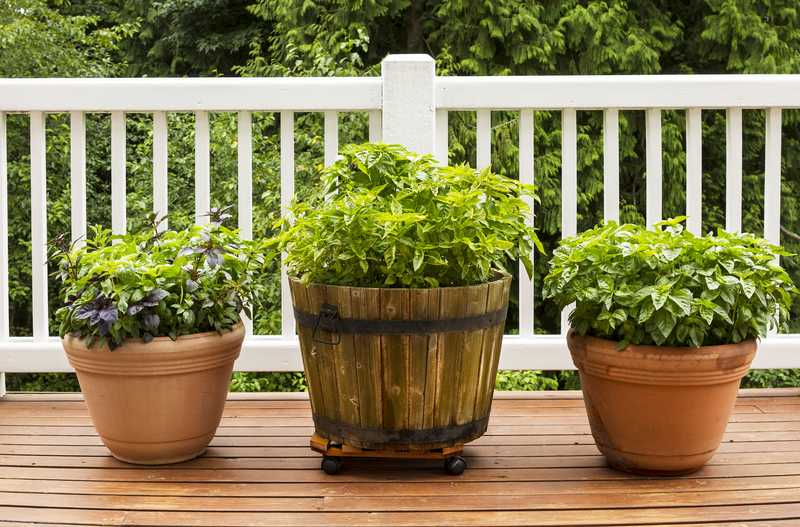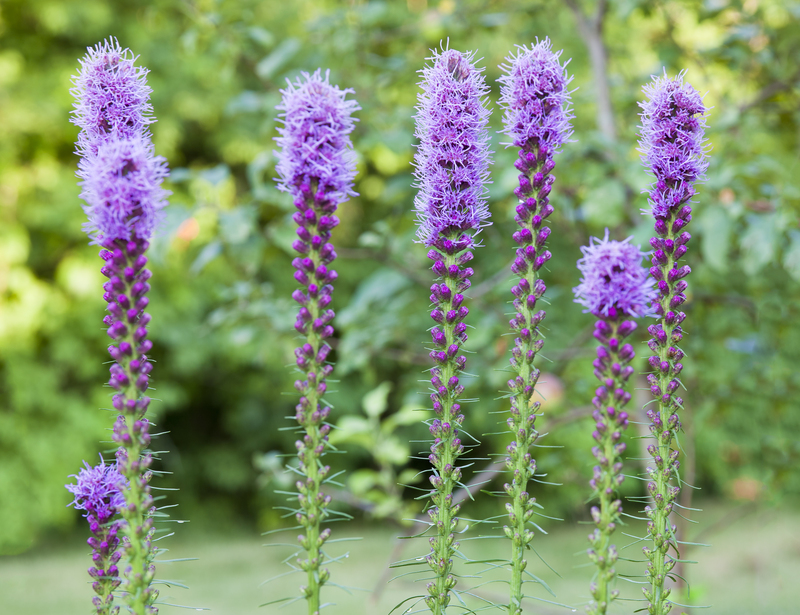Wind-Proofing Your Green Space: A Step-by-Step Guide
Posted on 15/08/2025
Wind-Proofing Your Green Space: A Step-by-Step Guide
If you've ever watched your beloved garden struggle against relentless winds, you know how damaging the effects can be. Wind can parch plants, uproot shallow-rooted specimens, topple delicate garden features, and erode productive soil. Whether your green haven is a small urban balcony or a sprawling backyard, wind-proofing your green space is essential for healthy plants and a thriving landscape! In this definitive, SEO-optimized guide, we'll cover the best techniques and strategies you need to protect your outdoor sanctuary from damaging gusts and breezes.
Understanding the Impact of Wind on Your Garden
Before diving into specific solutions, let's first understand how wind impacts your green space:
- Physical Damage: Strong gusts can snap branches, flatten flowers, and uproot young, tender plants.
- Water Stress: Persistent wind dries out soil and foliage, causing plants to lose moisture faster than they can replace it.
- Soil Erosion: Loose, unprotected soil can be blown away, exposing roots and washing away nutrients.
- Temperature Fluctuations: Wind can exacerbate temperature extremes, chilling or dehydrating plants.
- Pest and Disease Spread: Wind spreads fungal spores, weed seeds, and even pests from neighboring properties.
Understanding these risks is the first step in wind-proofing your garden and creating a lush, resilient green space.

Step 1: Assess Your Garden's Unique Wind Exposure
Every garden--and balcony or terrace--faces its own set of wind challenges. Assessing your specific wind exposure helps you target your wind-proofing measures for maximum effectiveness.
Observe the Patterns
- Which direction does the prevailing wind come from? (e.g., mostly westerly or northerly)
- Are there open gaps in fences, hills or neighboring buildings that funnel winds?
- Is wind a problem year-round or only during stormy seasons?
Map Your Microclimates
- Identify sheltered spots: behind walls, dense shrubs, or nearby structures.
- Highlight exposed zones: raised beds, rooftops, or open central lawns.
Take notes and sketch a simple wind exposure map of your property, identifying the most vulnerable areas. This assessment lays the groundwork for effective wind protection solutions.
Step 2: Choose the Right Windbreaks
The cornerstone of any wind-proof green space is the use of strategic windbreaks. These barriers slow the wind, reduce its force, and provide a buffer for fragile plants. There are two main types:
- Living Windbreaks: Trees, shrubs, hedges, and dense plantings.
- Structural Windbreaks: Fences, walls, screens, and garden structures.
Designing Natural Windbreaks
- Select hardy, fast-growing species: Consider evergreens like arborvitae, holly, or boxwood for year-round shelter.
- Layer your plantings: Combine tall trees with medium and low shrubs in staggered rows for maximum wind reduction.
- Allow for "filtered" wind: Solid walls cause turbulence, while plant windbreaks slow wind gently--ideal for delicate gardens.
- Leave gaps for wildlife: Native bushes or wildflower borders let beneficial insects and birds find safe passage.
Integrating Hardscaping Windbreaks
- Install slatted fences, trellises, or lattice screens: Permeable barriers slow wind better than solid walls and look attractive.
- Utilize existing architecture: Shed walls, garages, or pergolas can be adapted to shield the most exposed zones.
- Combine with climbing plants: Train vines like clematis or ivy up supports for a living, windproof "wall" effect.
Tip: For most gardens, windbreaks should be placed at right angles to prevailing winds and set 2-5 times their height away from the area needing protection.
Step 3: Protect Individual Plants and Plantings
Not every green space can accommodate large-scale wind barriers. Sometimes, direct plant protection is key. Here's how to shield your most vulnerable specimens:
- Staking and Support: Stake tall annuals, young trees, or climbing plants using sturdy stakes, ties, and soft twine to prevent wind-rock.
- Mulching: Apply a thick layer of organic mulch (such as wood chips or compost) to anchor soil and conserve moisture for wind-exposed plants.
- Row Covers and Cloches: Use horticultural fleece, netting tunnels, or cloches to protect seedlings and tender crops from windburn.
- Strategic Planting: Group plants together; dense plantings shelter each other and minimize wind "tunneling" through bare soil.
- Container Tactics: On balconies and patios, place pots against walls, or group them for mutual protection. Use heavy planters or give lightweight pots extra ballast.
Step 4: Improve Soil Structure to Prevent Erosion
Even the sturdiest windbreak won't help if your soil is easily swept away. Soil protection is vital for maintaining a healthy, wind-proofed garden.
- Cover bare soil with ground covers like clover, creeping thyme, or low ornamental grasses.
- Plant cover crops in vegetable beds during off-seasons to hold soil in place and add organic matter.
- Use mulches--bark chips, straw, shredded leaves, or geotextile fabrics--to prevent erosion and keep roots moist.
- Create raised beds with timber or stone edging to help anchor soil in exposed locations.
- Install low fencing (woven willow or recycled plastic) around the base of open beds to break up wind at ground level.
Improving your soil resilience goes hand in hand with broader efforts at wind-proofing your outdoor space.
Step 5: Employ Smart Maintenance and Gardening Practices
Ongoing gardening practices can make your green space more resilient to wind over time. Here are key techniques to consider:
Regular Pruning and Thinning
- Trim overgrown branches: Reduce "sail area" on trees so wind passes through, not against, their canopies.
- Thin dense shrubs: Allow wind to filter rather than tear through heavy foliage, lessening breakage.
Moisture Management
- Water deeply: Well-watered soil helps anchor roots and supports plant resilience against wind stress.
- Install drip irrigation: Automatic systems help deliver water to the root zone where it's most needed in windy, drying periods.
Prompt Repair and Check-Ups
- Inspect and secure structures: After storms, check windbreaks, fences, arches, and plant supports for any signs of damage or looseness.
- Replace or restore as needed to prevent future vulnerabilities.
Choose Hardy, Wind-Tolerant Varieties
- Select tough species: Grasses, succulents, and local natives are often better adapted to breezy sites.
- Avoid top-heavy or brittle plants for the most exposed locations.
With care and deliberate gardening, wind-proofing your green space becomes second nature and pays off every time a storm blows through.
Bonus Tips for Specific Outdoor Spaces
Wind-Proofing Balconies and Rooftop Gardens
- Install balcony screens or mesh panels: Reduce wind speed without blocking too much sunlight.
- Cluster pots for mutual protection: Position heavy planters to stabilize groups of lighter ones.
- Opt for compact, low-growing varieties: Choose plants that won't topple or dry out quickly.
Defending Vegetable Patches or Allotments
- Use windbreak netting: Quick to erect and ideal for seasonal shelter around rows or plots.
- Build low raised beds: Edging can reduce wind speed at ground level.
- Protect young plants: Temporary tunnels or cloches can help seedlings get established before facing the full force of the wind.
Common Mistakes to Avoid When Wind-Proofing Your Garden
- Solid, Tall Walls: These may seem effective, but they create wind "eddies" and turbulence. Go for semi-permeable options instead.
- Single-Row Plantings: One line of trees or shrubs isn't as effective as staggered, multi-layer barriers.
- Overcrowding: Too-dense plantings compete for resources and can inhibit windflow more than necessary, increasing disease risk.
- Neglecting Ongoing Maintenance: A windbreak is only as good as its upkeep--check for gaps or overgrowth each season.
Frequently Asked Questions on Wind-Proofing Green Spaces
How high should my windbreak be?
As a rule of thumb, a windbreak protects an area extending up to 10 times its height downwind. For most gardens, a windbreak of 1.5-3 meters (5-10 feet) is practical and effective.
Can I use temporary windbreaks?
Absolutely! Windbreak netting, bamboo fencing, and moveable screens are great for seasonal or event-based protection, such as during a storm or when establishing new beds.
What are the best plants for living windbreaks?
Evergreens like holly, laurel, pine, and juniper provide year-round shelter. For mixed borders, combine these with dogwood, viburnum, or native hedgerow species for biodiversity.

Conclusion: Investing in a Wind-Resistant, Flourishing Green Space
Wind-proofing your green space puts you firmly in control of your garden's environment and its future productivity. By understanding wind's impact, strategically placing natural and hardscape windbreaks, protecting individual plants, and practicing sustainable gardening, you can create a beautiful, resilient oasis that weathers every storm. Not only do these steps protect your investment in plants and features, but they also foster healthier soil, attract more wildlife, and promote sustainable gardening.
If you're eager for a lush, thriving garden whatever the weather, start with these step-by-step wind-proofing guidelines. Your plants--and your peace of mind--will thank you for years to come!
Further Reading and Resources
- RHS: Protecting Your Soil from Erosion
- Gardeners' World: How to Make Your Garden Windproof
- Gardening Know How: Building Windbreaks for Gardens
Now that you know how to wind-proof your green space, why not share your own tips or questions in the comments below? Let's grow together--rain, shine, or wind!

